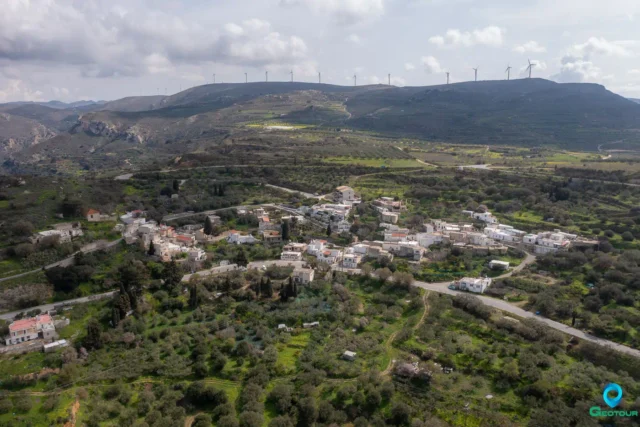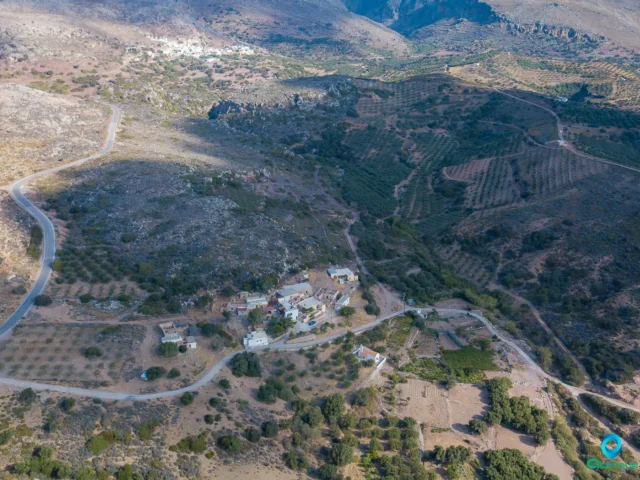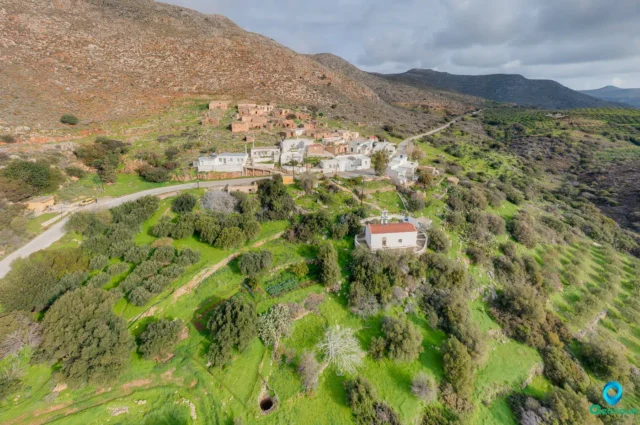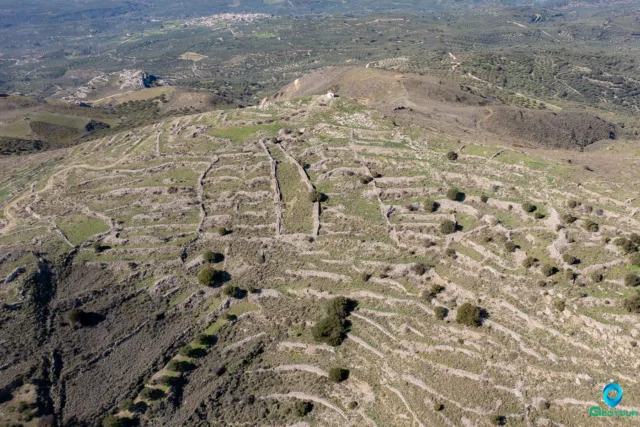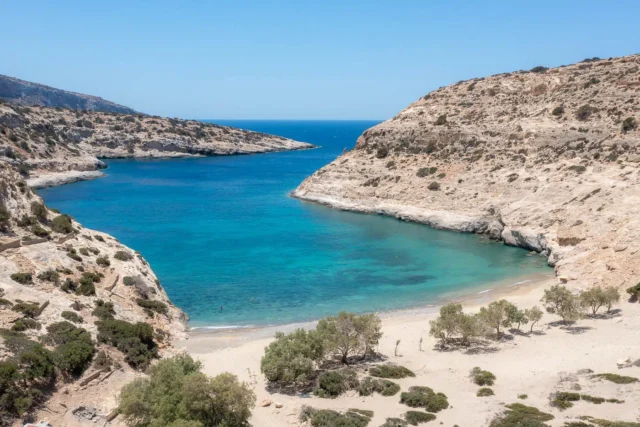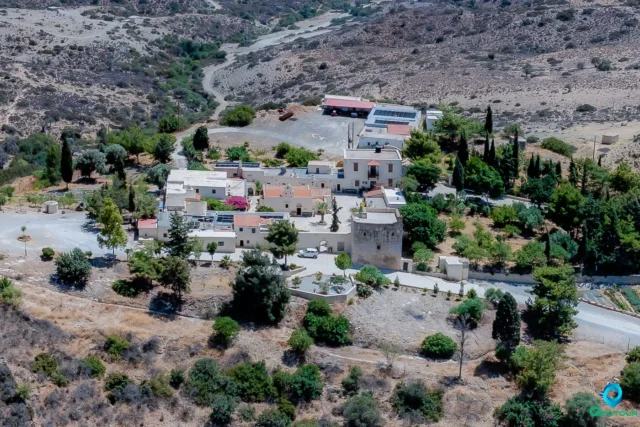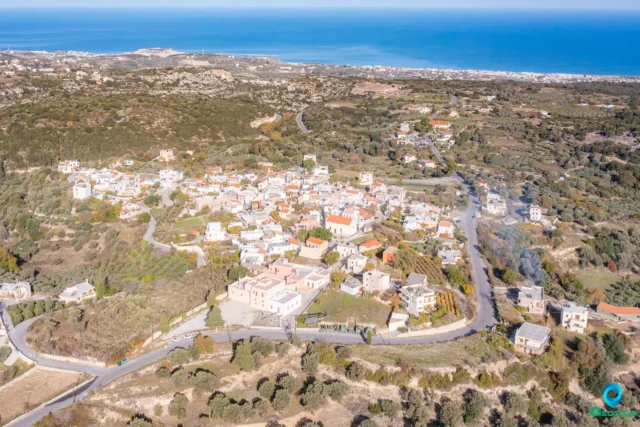748
listings found
Categories
Active filters:
Mochlos, Siteia
Mochlos Island, a small rocky island in Crete's Gulf of Mirabello, is a significant Minoan archaeological site and a popular tourist destination. Inhabited during Minoan times, Mochlos was a major port and production center. The Minoan settlement was impacted by the Thera eruption. Later, Venetians built a fort, whose ruins remain. The island's history spans from the Bronze Age Minoan civilization through Venetian rule to its current status as a tourist attraction. The village of Mochlos faces the island.
Papagiannades, Siteia
Papagiannades, a village in Sitia, Crete, boasts a history dating back to the Minoan era, evidenced by settlement remains. First mentioned in 1834, its name derives from its settlers. The Venetian-era church of Panagia Eleousa, with frescoes from 1363-64, stands as a landmark. Known for high-quality olive oil, the village features a historic oil mill. Papagiannades offers a glimpse into traditional Cretan life, with narrow streets and hospitable residents, surrounded by olive groves. The village population, 69 in 2021, reflects its quiet charm.
Ancient Lykastos
An ancient city in Crete, located at the Vitsilia site near modern Profitis Ilias and known primarily from literary sources. First mentioned in Homer's Iliad's Catalogue of Ships, its mythological founder was Lykastos, a son of King Minos. During the Hellenistic era, the city was destroyed by the neighboring city-state of Knossos. Its territory subsequently became a point of contention, with Gortys seizing it and granting it to Rhaukos. Roman intervention in 185 BCE ultimately divided the lands between Knossos and Lyktos.
Zakathos, Siteia
Zakathos, a now-abandoned village in Lasithi, Crete, has a history rooted in pre-Hellenic times. During the Ottoman era, it was a Turkish village, with inhabitants converting to Islam. Later, it functioned as a metochi (farm) associated with Katelionas, as documented in the 1583 census. The village, situated in the Sitanos region, had a Muslim population of 103 in 1881. The abandoned settlement, divided into Upper and Lower Zakathos, is now utilized by residents of Ziros and Zakros. A notable Ottoman-era fountain graces the nearby "Vrysi" spring in Sitanos.
Klisidi, Siteia
Klisidi, a settlement in Sitia, Lasithi, Crete, is located at 220 meters altitude. While not in Venetian or early Ottoman records, it's mentioned in a later Ottoman document and the 1834 Egyptian census with 5 Christian families. In 1881 it had 37 Christians, growing to 44 inhabitants by 1900. The population has since decreased, from 49 in 1940 to just 2 in 2021.
Kellaria, Siteia
Kellaria, a small village in the Sitia municipality of Lasithi, Crete, is situated at an altitude of 340 meters. Known for olive oil and wine production, the village's history dates back to 1583. Once an independent municipality, it later became part of Sitia. The village is divided into inhabited and abandoned sections, showcasing traditional architecture. Its population has dwindled to just four residents in 2021. The Agios Georgios church and a cemetery are located within the village. Historically, inhabitants were farmers and shepherds. Kellaria is near the Zakros archaeological site and Vai beach.
Skalia, Siteia
Skalia, a small village in Crete's Sitia region, is known for its 19th-century resistance against Turkish rulers. The villagers' bravery became legendary, but their resistance led to a tragic end. Betrayed by a priest, the villagers were massacred by Turks. Today, Skalia lies in ruins, with only the Church of Agios Georgios and one house remaining. The village wall and spring are still visible. The tragedy occurred in the late 17th or early 18th century, and is commemorated annually.
Monastiraki, Ierapetra
Monastiraki (Monastirakion) is a small village in Lasithi, Crete, situated on Mount Thrypti's slopes, near Ha Gorge, with views of Mirabello Gulf. Located 5km from Pahia Amos and 11km from Ierapetra, it's part of the Pahia Amos community. Historically, it was mentioned by Castrofylakas around 1853, possibly built on a former monastery site dedicated to Saints Constantine and Helen. The 2021 census recorded 21 residents. The village experienced population fluctuations over the years, from 10 families in 1834 to a single resident for some time, and now sees a revival with home renovations and infrastructure improvements. Points of interest include the Byzantine churches of Agios Stefanos and Agios Georgios, alongside two traditional cafes serving Cretan cuisine.
Thrypti, Ierapetra
Thrypti is a small mountain settlement in eastern Crete, within the municipality of Ierapetra, Lasithi. Nestled in the Thrypti mountains, near the Ha Gorge and Afentis Christos peak, it boasts a unique pine forest. The village has historical significance, with evidence of Minoan and Byzantine settlements. Landmarks include the churches of Nativity of Theotokos, Agios Ioannis Prodromos, Timios Stavros, and Agia Anna. The economy is based on viticulture and animal husbandry, though many residents have relocated. Access is via paved road from Pano Chorio and dirt roads from Oreino and Kavousi.
Mesi, Viannos
Mesi, a small village in the Kato Viannos municipality of Crete, Greece, is located at an altitude of 540 meters. The village's history is linked to the Ottoman-era settlement of Pera Mesi, which was tragically destroyed during a wedding celebration. Today, Mesi is sparsely populated, with residents primarily engaged in agriculture. The village has a relatively recently built church dedicated to both Prophet Elias and the Three Hierarchs.
Ancient Arkadia
Ancient Arkadia (Arcades) was a significant polis on Crete, located near modern Afrati. It contested Mount Ida's claim as Zeus's birthplace. Active from at least the 4th century BCE (noted by Theophrastus for environmental issues), it participated in the Lyttian War (c. 220 BCE) and minted silver/bronze coins inscribed "ARKADON" (c. 330-280/70 BCE). Numerous inscriptions reveal treaties with Gortyn, Miletos, Teo, and Eumenes II (183 BCE), plus Roman-era bathhouse regulations. Excavations uncovered houses, a cemetery with Minoan-influenced vaulted tombs, Geometric/Orientalizing period artifacts, local pottery, and a unique 7th-century BC Phoenician capital. Epigraphic evidence suggests an Asclepius temple.
The Settlement of Vitsilia
Vitsilia, an abandoned medieval village in Crete, provides valuable insights into fortified settlements of the era. Located in Monofatsi, Heraklion, the village was inhabited by villeins and free peasants. A 1387 document reveals details about its structure, including a northern wall, two entrances, and two towers. The village, with a naturally fortified position, likely served as a watchtower in earlier times. Archaeological evidence suggests the presence of houses, a church, and a cemetery. Despite its small size, with a population never exceeding 60, Vitsilia holds historical significance. Today, five houses and the Venetian-era Church of the Holy Cross have been restored.
Chersonissos, Herronissos (Ancient)
Chersonissos is an ancient Greek city located on the northern coast of Crete. It was inhabited as early as the Minoan period and continued to flourish under the Romans and Byzantine eras. The city served as the port of Lyttos, an inland city, and was an important center for trade and commerce. Archaeological excavations have revealed a number of significant structures, including a theater, early Christian basilicas, and harbor remains. The city's history is reflected in its coins, which feature various deities and symbols. Chersonissos is now a popular tourist destination, known for its beautiful beaches, ancient ruins, and lively nightlife.
Vathy
Vathy Beach, a secluded haven on Crete's southern coast, is located 79 kilometers southwest of Heraklion and 17 kilometers south of Sivas, near Cape Lithino. The beach, nestled at the end of a gorge carved by the Vathy stream, is surrounded by towering cliffs that create a lagoon-like setting. Historically, it was a pirate hideaway and a hermitage for monks from the Odigitria Monastery. The surrounding cliffs feature natural alcoves and shelters built by locals from Gergeri village who brought their flocks here to overwinter. The beach is generally calm, except during westerly winds, and has a sandy seabed with some rocks. It offers a tranquil escape, with few tamarisk trees for shade and no amenities. To reach Vathy, drive from Sivas to the Odigitria Monastery, turn right onto a dirt road heading west, and continue for about 10 kilometers. Despite its remote location, the beach can get crowded in August.
Moni Odigitrias monastery
Moni Odigitrias, a 14th-century Greek Orthodox monastery nestled in the Asterousia Mountains of Crete, stands as a testament to the island's rich history and resilience. Dedicated to the Virgin Mary "Odigitria" ("She who shows the way"), the monastery has been a place of pilgrimage and refuge for centuries.
During the Venetian period, Moni Odigitrias flourished as a center of learning and art. Its walls are adorned with frescoes by renowned Cretan painters, including Angelos Akotantos, who also crafted the monastery's iconic iconostasis. The monastery's collection of valuable icons and manuscripts further reflects its cultural significance.
Moni Odigitrias played a pivotal role in the Cretan resistance against the Ottoman Empire. It served as a sanctuary for rebels and a symbol of defiance. The legendary "Xopapas" (Father Ioasaph), a monk turned rebel leader, led the resistance from within the monastery's walls.
Today, Moni Odigitrias remains a working monastery, home to a small community of monks. It has undergone extensive restoration and welcomes visitors to explore its historic grounds, including a museum showcasing artifacts from its past. The museum houses a traditional loom, a stone oven, an olive press, and agricultural tools, providing a glimpse into the monastery's self-sufficient lifestyle.
Kalami, Viannos
Kalami, a historic village in Crete, strategically located in the semi-mountainous area of the Viannos municipality. Built during the Venetian or Ottoman period, it offered protection against raids and pirate attacks. Once a thriving community, Kalami was an important commercial center with a customs office, warehouses, and various professions. The village's economy was based on agriculture, with residents cultivating olive trees, cereals, fruit trees, and carob trees. After 1960, the focus shifted to early vegetables and bananas. Kalami also served as the main winter residence, with people moving to lower-lying "metochia" in the summer for farming. Today, Kalami is largely deserted, with most residents relocating to coastal settlements.
Selli, Rethymno
Selli (Σελί) is a village situated in the Rethymno regional unit on the island of Crete, Greece. It is located approximately 17 kilometers southeast of Rethymno town, nestled in the […]
Gerokampos Tholos Tomb
The Lebena Gerokampos Tholos Tomb is an Early Minoan I-II (c. 3100-2600 BCE) archaeological site located near Lentas, on the southern coast of Crete, close to the ancient Minoan settlement of Lebena. The tomb, with an interior diameter of approximately 5 meters, is typical of tholos tombs, with a circular chamber built of large stones and a corbelled vault. The tomb also features several smaller chambers or annexes, which were added later. These annexes, along with the main tholos, served as spaces for burial and ritual activities. A large quantity of pottery, including pyxides, tankards, cups, and bowls, was found in the tomb. The tomb contained the skeletal remains of numerous individuals, providing evidence of collective burial practices. Other significant finds from the tomb include jewelry, tools, and figurines.
Chromonastiri, Rethymno
Chromonastiri is a traditional Cretan village with a rich history dating back to the 12th century. It's located 11 kilometers southeast of Rethymno, near Mount Vrysinas. The village is known for its Venetian-era architecture, particularly the restored Villa Claudio, now home to the Chromonastiri Military Museum.
Chromonastiri also boasts several significant Byzantine churches, including the 11th-century Church of Panagia Kera with its unique architectural features and surviving frescoes. The Church of Agios Eftychios at Perdiki Metochi is another notable Byzantine church, featuring impressive frescoes and a distinct folk art style.
The village square houses the renovated Prinari olive mill, now an educational center showcasing the history of olive oil production and traditional Cretan life. Chromonastiri is a designated traditional settlement, offering visitors a glimpse into Crete's cultural heritage through its architecture, religious sites, and historical landmarks.










